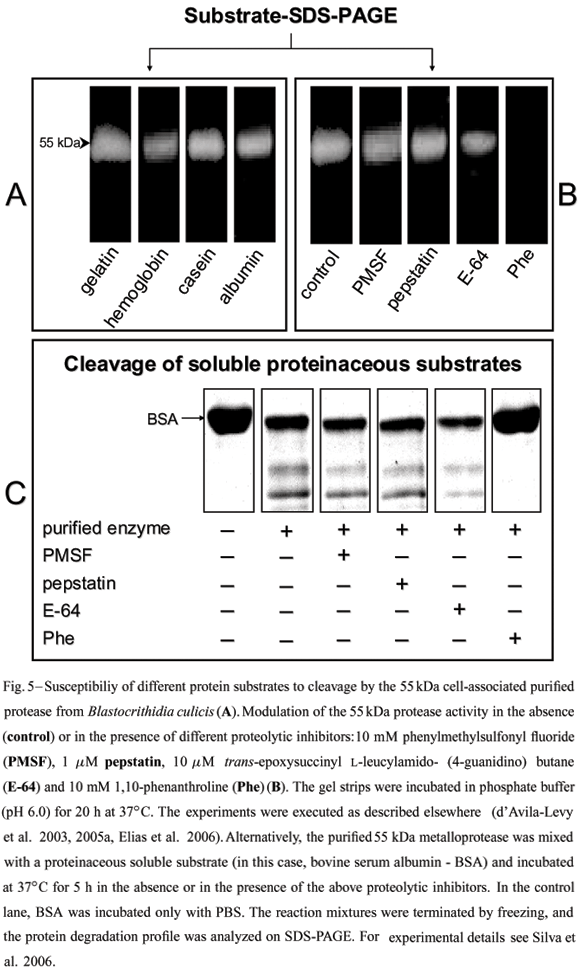Plant and insect trypanosomatids constitute the "lower trypanosomatids", which have been used routinely as laboratory models for biochemical and molecular studies because they are easily cultured under axenic conditions, and they contain homologues of virulence factors from the classic human trypanosomatid pathogens. Among the molecular factors that contribute to Leishmania spp. virulence and pathogenesis, the major surface protease, alternatively called MSP, PSP, leishmanolysin, EC 3.4.24.36 and gp63, is the most abundant surface protein of Leishmania promastigotes. A myriad of functions have been described for the gp63 from Leishmania spp. when the metacyclic promastigote is inside the mammalian host. However, less is known about the functions performed by this molecule in the invertebrate vector. Intriguingly, gp63 is predominantly expressed in the insect stage of Leishmania, and in all insect and plant trypanosomatids examined so far. The gp63 homologues found in lower trypanosomatids seem to play essential roles in the nutrition as well as in the interaction with the insect epithelial cells. Since excellent reviews were produced in the last decade regarding the roles played by proteases in the vertebrate hosts, we focused in the recent developments in our understanding of the biochemistry and cell biology of gp63-like proteins in lower trypanosomatids.
Trypanosomatidae; lower trypanosomatids; gp63; invertebrate host; adhesion; nutrition; protease











